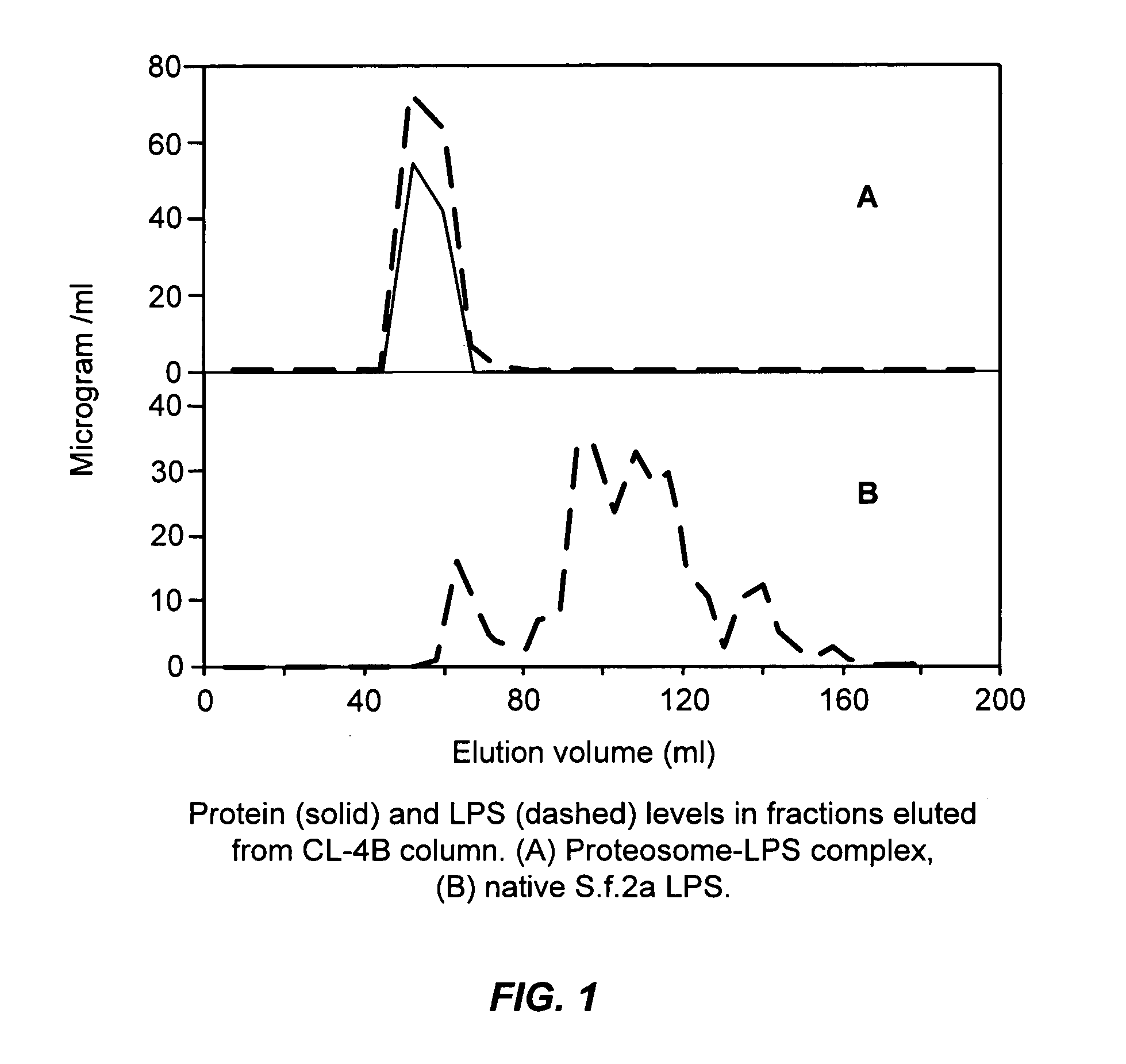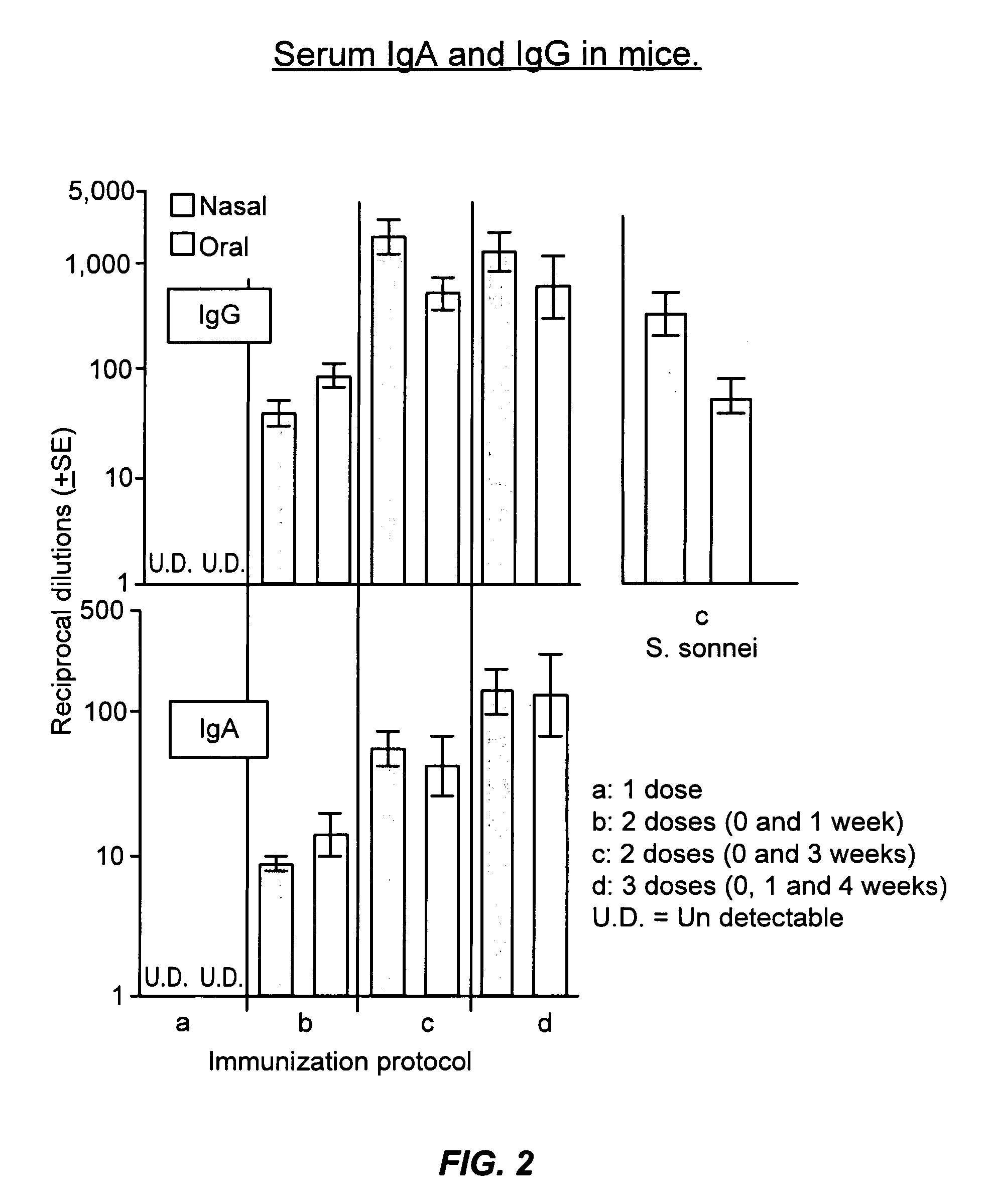Oral or intranasal vaccines using hydrophobic complexes having proteosomes and lipopolysaccharides
a hydrophobic complex and lipopolysaccharide technology, which is applied in the direction of antibody medical ingredients, carrier-bound antigen/hapten ingredients, sugar derivates, etc., can solve the problem of narrow window between efficacy and safety of such vaccines
- Summary
- Abstract
- Description
- Claims
- Application Information
AI Technical Summary
Problems solved by technology
Method used
Image
Examples
Embodiment Construction
LPS Preparation
[0013]LPS was extracted by hot phenol from single isolate of Shigella flexneri 2a or Shigella sonnei (Westphal, O. and K. Jann. 1965. Carbohydr. Chem. 5:83.11). The LPS extraction protocol was generally as follows:
[0014]Grow bacteria in LB for 2–3 hrs at 37° C. Incubate 3 ml starter in rho-bottles with nutrient agar (+2% agar), overnight at 37° C. Harvest bacteria with 15 ml saline / bottle (+glass beads) and filter the suspension through gauze pad. Centrifuge the filtrate at 5000 RPM, 4° C., (Sorval RC5B, 250ml tubes, cat. 03937 in GSA rotor) for 15 minutes and resuspend the pellet in ¼5 ml saline / Tube.
Add acetone to the resuspended bacteria (1.5 L / 10 ml resuspended bacteria) and left for two days. Remove the Acetone by filtration through Whatman paper under vacuum and dry the bacteria completely under vacuum to form white, fine powder. Add dH2O to the powder (25 ml / 1.4 gr dried bacteria) and gently steer until all powder is hydrated. Add phenol (at 37° C.) to the mixt...
PUM
| Property | Measurement | Unit |
|---|---|---|
| volume | aaaaa | aaaaa |
| volume | aaaaa | aaaaa |
| volume | aaaaa | aaaaa |
Abstract
Description
Claims
Application Information
 Login to View More
Login to View More - R&D
- Intellectual Property
- Life Sciences
- Materials
- Tech Scout
- Unparalleled Data Quality
- Higher Quality Content
- 60% Fewer Hallucinations
Browse by: Latest US Patents, China's latest patents, Technical Efficacy Thesaurus, Application Domain, Technology Topic, Popular Technical Reports.
© 2025 PatSnap. All rights reserved.Legal|Privacy policy|Modern Slavery Act Transparency Statement|Sitemap|About US| Contact US: help@patsnap.com



